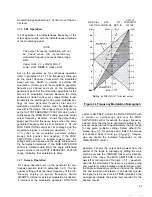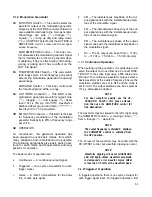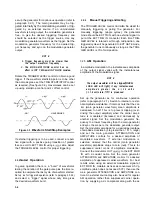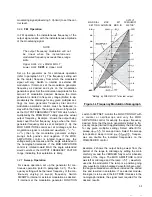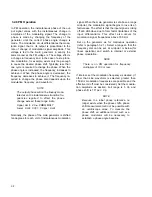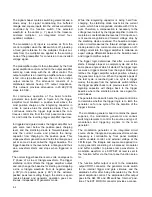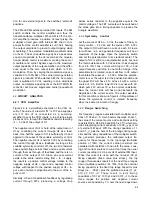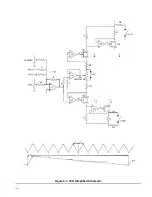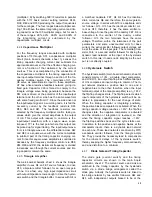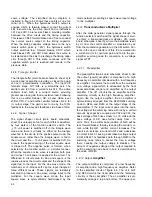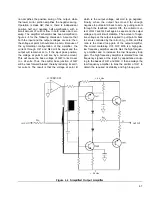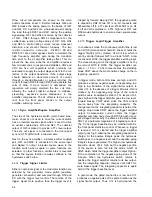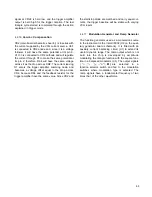
modulating signal (observing 5 Vp limit) to set the car-
rier level.
3.2.6
FM Operation
2.0-
In FM operation, the instantaneous frequency of the
output signal varies with the instantaneous amplitude
of the modulating signal.
NOTE
1.4-
The output frequency modulation will not
b e l i n e a r w h e n t h e i n s t a n t a n e o u s
modulated frequency exceeds these range
limits.
Upper Limit: 2.0
x
FREQ MULT
Lower Limit:
0.001 x
Upper Limit
Set up the generator as for continuous operation
(refer to paragraph 3.2.1). The frequency setting will
be the center frequency from which the modulated
signal will vary. Switch to internal or external FM
modulation. If internal, set the modulation generator
frequency as desired and sync on the modulation
generator signal. Set the modulation amplitude for the
amount of modulation desired. Because the main
generator is limited in frequency range (limited to ap-
proximately the dial range for any given multiplier set-
ting), the main generator frequency dial and the
modulation amplitude control. must be balanced to
stay within that range. The range is shown in figure 3-4
as the OUTPUT FREQUENCY FACTOR, which, when
multiplied by the FREQ MULT setting, gives the actual
output frequency. Example 1 shows the output being
swept over the full frequency range when the main
generator frequency dial is set at midpoint (1 .O), the
MOD AMPLITUDE control set at midrange and the
modulation signal is a balanced waveform (
,
or
); that is, the modulation generator voltage
swings both positive and negative. If the MOD
AMPLITUDE control is rotated toward ccw, the
voltage swing decreases and the angle subtended in
the nomograph decreases. If the MOD AMPLITUDE
control is rotated toward MAX, the angle subtended
would overshoot the OUTPUT FREQUENCY FACTOR
range, indicating that saturation is likely.
3.2.7
Sweep Operation
For sweep operation, set up the generator for con-
tinuous operation (refer to paragraph 3.2.1). The fre-
quency setting will be the lower frequency of the con-
tinuously varying (or swept) frequency. Switch
FM/SWP to internal or external modulation as desired.
If internal set the modulation generator FUNCTION
OUTPUT
MAIN DIAL
MOD
EXT
FREQUENCY
SETTING AMPLlTUDE
MOD IN
FACTOR*
1.8.
1.6-
.8-
.6-
.4-
.2-
.002-
.6
.8
1.6
1.8
*Multiply by FREQ MULT for actual output.
Figure 3-4. Frequency Modulation Nomograph
switch to SWP SET, monitor the FUNCTION OUT with
a counter or oscilloscope and vary the MOD
AMPLITUDE control for exactly the upper frequency
desired. Note that the main generatoris limited in fre-
quency range (limited to approximately the dial range
for any given multiplier setting). Select either/l/l for
sweep up
for sweep down. Select the sweep
rate desired. Keep in mind
frequen-
cies are double the indicated frequencies on the
FREQ/PERlOD control.
Example 2 shows the output being swept from the
bottom of the range to midrange by setting the main
dial fully cw and the VERNIER fully ccw for absolute
bottom of the range. The MOD AMPLITUDE control
was left at midrange and the ramp
) waveform
used as the modulator. The ramp is a positive going
only waveform. Had a balanced waveform been used,
the angle subtended would have included the dotted
line and resulted in saturation. If an external modula-
tion signal is to be used, the EXT MOD IN values in the
nomograph indicate the signal level required for the
desired results.
3-5








